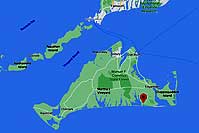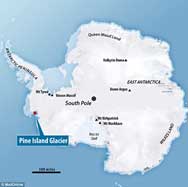Class News
Tony Lavely ’64 on rising sea levels and climate change
Will climate change erase your memories?
by Tony Lavely ’64
September 26, 2020


Most people remember special places in their lives, as markers of special memories. For me, one such place is Crackatuxet Beach on the south coast of Martha’s Vineyard near Edgartown. My family surprised me with a 70th birthday party there in 2012 when both my brother and sister flew in for the occasion. Years earlier, in 2004, my future son-in-law proposed to my daughter on the private beach, also on my birthday. I’ve built sandcastles with my three granddaughters on this beach in later years. Crackatuxet was named by the Wampanoag Native American tribe. So it saddens me to think that unmitigated climate change will totally engulf this special place due to rising sea levels. My granddaughters won’t be able to enjoy it with their children and grandchildren, because it will be gone.



 In his widely viewed 2019 TED Talk, John Englander explains why rising sea levels are a fundamental consequence of unmitigated climate change. “To understand the magnitude of sea level rise, we have to consider the current rate of rise, the rate we can expect over the next several decades, and projected rates for the end of the century, based on different greenhouse gas scenarios.
In his widely viewed 2019 TED Talk, John Englander explains why rising sea levels are a fundamental consequence of unmitigated climate change. “To understand the magnitude of sea level rise, we have to consider the current rate of rise, the rate we can expect over the next several decades, and projected rates for the end of the century, based on different greenhouse gas scenarios.  Presently, sea level is rising at a rate of about an inch a decade. This rate has doubled over the past three decades. … Most projections presently are for between three and seven feet by the end of the century. A beach sand dune, with a lower area of marshland behind it [Crackatuxet Beach exactly], could lose more than a mile of property for each foot of sea level rise.”
Presently, sea level is rising at a rate of about an inch a decade. This rate has doubled over the past three decades. … Most projections presently are for between three and seven feet by the end of the century. A beach sand dune, with a lower area of marshland behind it [Crackatuxet Beach exactly], could lose more than a mile of property for each foot of sea level rise.”

Sea level rise is all about ice. In his chilling book, World Without Ice, Henry Pollack writes: “If ice spillage to the sea continues throughout this century at the rate observed in its first decade, enough ice will enter the oceans to raise sea level three feet. And to that rise must be added the thermal expansion of the seawater as the oceans continue to warm — an effect that will raise sea level at least as much as the new ice does.”
Ice in the polar regions is melting due to global warming, which in turn is due to carbon emissions in the Industrial Age.  In his book, Our Final Warning: Six Degrees of Climate Emergency,Mark Lynas describes the impact of warming temperatures on our planet. One of the crucial impact points is rising sea levels.
In his book, Our Final Warning: Six Degrees of Climate Emergency,Mark Lynas describes the impact of warming temperatures on our planet. One of the crucial impact points is rising sea levels.  Lynas describes the Pine Island Glacier in the Antarctic: “The accelerating rate of melt now makes PIG the largest single glaciological contributor to sea level rise in the world. This one glacier now adds a tenth of a millimeter each year to the height of global oceans.” Lynas added: “The entire West Antarctic Ice Sheet is now in ‘structural imbalance.’ Scientists fear that a wave of thinning is spreading rapidly across some of Antarctic’s most vulnerable glaciers, driving up sea levels around the planet.”
Lynas describes the Pine Island Glacier in the Antarctic: “The accelerating rate of melt now makes PIG the largest single glaciological contributor to sea level rise in the world. This one glacier now adds a tenth of a millimeter each year to the height of global oceans.” Lynas added: “The entire West Antarctic Ice Sheet is now in ‘structural imbalance.’ Scientists fear that a wave of thinning is spreading rapidly across some of Antarctic’s most vulnerable glaciers, driving up sea levels around the planet.”

There is hope, but only if we accelerate our mitigation efforts. Ironically, fourteen miles off the south coast of Martha’s Vineyard and Crackatuxet Beach, wind power is proving its potential to save the beach. In an interview with WWLP TV, Susannah Hatch, clean-energy coalition director for the Environmental League of Massachusetts (ELM), said: “Offshore wind is the single biggest lever we can pull to reduce our emissions, address the climate crisis, meet our energy needs, and grow our economy simultaneously.”  Hatch added, “We aim to drive governors and legislatures to support regional collaboration and more offshore wind procurements, building the political will to power every home in New England with offshore wind. We also aim to build public support to enable offshore wind projects to come online in a timely and responsible manner.”
Hatch added, “We aim to drive governors and legislatures to support regional collaboration and more offshore wind procurements, building the political will to power every home in New England with offshore wind. We also aim to build public support to enable offshore wind projects to come online in a timely and responsible manner.”
In addition to increasing the usage of non-fossil fuels, like wind and solar, taxes on carbon emissions represent the other major strategy to mitigate climate change. The Balance explains: “The purpose of a carbon tax is to reflect the true cost of burning carbon. Those costs are borne by those who suffer from the effects, such as homeowners, farmers, and ultimately the government. Carbon taxes make sure companies and consumers pay for the external costs they impose on society. It is a Pigouvian tax, since it returns the cost of global warming to their producers.
This story about sea level rise on Martha’s Vineyard and my favorite beach is just a very small example of the impact of sea level rise. World Ocean Review says: “A total of a billion people worldwide now live within 20 meters of mean sea level on land measuring about 8 million square kilometers. Climate change is placing increasing pressure on coastal regions which are already seriously affected by intensive human activity. This raises the question of whether — or to what extent — these areas will retain their residential and economic value in the decades and centuries to come, or whether they may instead pose a threat to the human race.”


Where are your special places? Are your memories threatened by climate change? Will you help save them by combating climate change? Remember the words of Wendell Barry, author and environmental activist:
Whether we and our politicians know it or not, Nature is party to all our deals and decisions, and she has more votes, a longer memory, and a sterner sense of justice than we do.
Anthony M. (Tony) Lavely is a career food-industry marketing executive. Born and raised in Massachusetts, he spent many happy days on Martha’s Vineyard. 
 In his role as Secretary for the Yale Class of 1964, he publicizes the environmental work that has been done by classmates over the years. Currently, Tony is engaged in a series of climate change workshops with a curriculum developed by Elders Climate Action. He is also part of a small working group of Yale classmates to foster communications about climate change.
In his role as Secretary for the Yale Class of 1964, he publicizes the environmental work that has been done by classmates over the years. Currently, Tony is engaged in a series of climate change workshops with a curriculum developed by Elders Climate Action. He is also part of a small working group of Yale classmates to foster communications about climate change.

